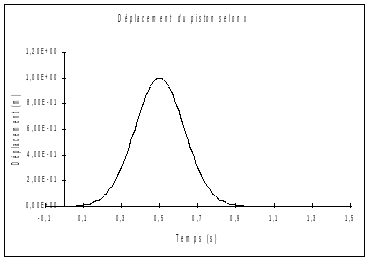1. Reference problem#
1.1. Geometry#
The system considered in the 3D case is that of a column of fluid with a square cross section and a piston of the same section animated by a rigid body movement along the axis of the column. The lateral surface of the column consists of an immobile rigid guide. The absorbent elements are placed on the face opposite the piston to simulate the infinity of the column in this direction. In the 2D case, the principle is identical with a column and a piston that are supposed to be very large, of which only a vertical section is modelled (see diagram).

1.2. Material properties#
Piston: concrete |
Acoustic fluid: water |
||
Density: |
\(2400{\mathit{kg.m}}^{\mathrm{-}3}\) |
Density: |
\(1000{\mathit{kg.m}}^{\mathrm{-}3}\) |
Young’s module: |
\(\mathrm{3,6}{.10}^{10}\mathit{Pa}\) |
Celerity: |
\(1500{\mathit{m.s}}^{\mathrm{-}1}\) |
Poisson’s ratio: |
\(\mathrm{0,48}\) |
1.3. Boundary conditions and loads#
Fluid-structure elements whose degrees of freedom of movement are blocked to zero are placed on the lateral surface of the column in order to reproduce the rigid wall condition.
All the nodes on the face of the piston in contact with the fluid are forced to move according to \(x\) with the following temporal excitation function:

1.4. Initial conditions#
The displacement of the piston is zero at the initial moment and the fluid is at rest.